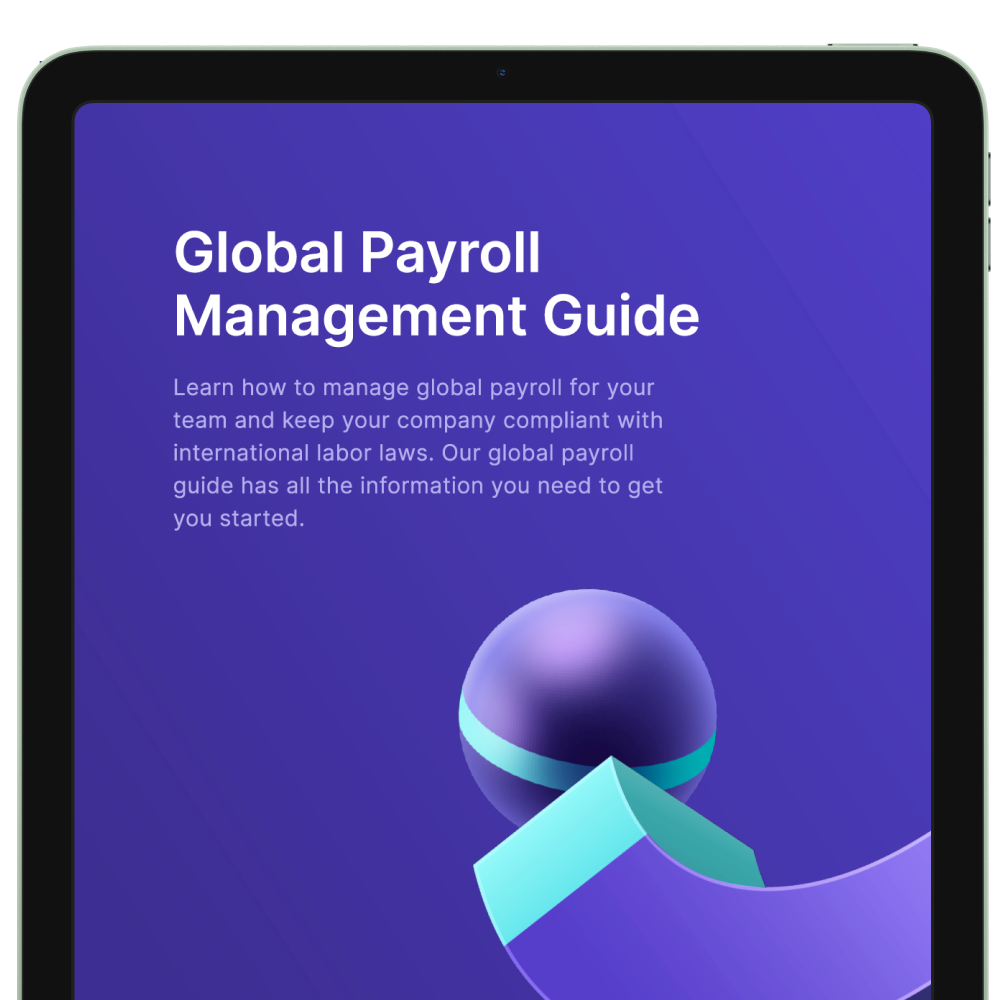
Product Updates — 7 min

Global Payroll — 9 min
Payroll is a particularly attractive target for fraud, as large amounts of money are frequently being moved between systems. As a result, it’s crucial to protect your business.
In this article, we’ll look at the various types of payroll fraud you should be aware of, and explain how to minimize their frequency and impact. We’ll also discuss some general fraud prevention tips and touch on the legal implications of payroll fraud.
So let’s jump straight in.
Payroll fraud occurs when an employee alters or manipulates payroll data without authorization. They may do this to give themselves more money, or to receive payment for work they didn’t do.
Note that employers can also commit payroll fraud, usually to reduce labor costs.
Developed by criminologist Donald R Cressey, the fraud triangle explains the factors that can lead to fraud risk, as follows:
Motivation/incentive: This is the reason for the fraud. For instance, the employee may be struggling financially, or be seeking to fund a large purchase.
Opportunity: This refers to the lack of controls, checks, balances, and oversight that enables the individual to commit fraud. For example, the employee may work in payroll and control their own pay.
Rationalization: This is the individual’s justification for stealing. For example, they might think your company won’t notice or “miss” the extra money, or they may be disgruntled at being passed over for a raise they feel they deserve.
If all three of these conditions exist simultaneously, the chances of payroll fraud occurring are high.
According to the Association of Certified Fraud Examiners, payroll fraud can cost a company $65,300, on average, and last around 30 months before it’s uncovered.
In addition to financial losses, you also need to allocate resources to address and fix the fraud, and replace the guilty employee.
In some locations, you may face legal and compliance problems for failing to already have the proper fraud prevention measures in place.
If you discover that an employee has committed payroll fraud, you should speak with your legal team (as well as taking your own internal disciplinary steps). The criminal consequences for fraud may depend on the fraud type, the amount stolen, and where you are based.
For example, a large amount of fraud committed over an extended timeframe could result in a much harsher criminal penalty.
In some cases, you may be able to sue for payroll fraud. Damages could consist of funds stolen and other factors, like reputational damage. Again, this varies depending on your location, so it’s advisable to consult with your legal counsel.
There are several common types of payroll fraud you should be aware of. In this section, we’ll look at each of them in detail, and explain what you can do to prevent them.
Timesheet fraud — often known as “buddy punching” — occurs when an employee manipulates timekeeping records to alter payment amounts. For example, an employee may add extra hours they didn’t work to boost their own (or a colleague’s) pay.
If done in small amounts — such as an extra hour every two weeks — timesheet fraud can be hard to catch.
How to minimize timesheet fraud:
Implement automated time-tracking systems
Conduct timesheet audits and spot-checks
Audit the salaries and wages portion of your bookkeeping system regularly
Have managers approve all timesheets
This type of fraud is generally restricted to departments that have access to your payroll system, such as payroll, finance, or HR. It occurs when employees raise their own pay, or work with someone in one of those departments to do so.
How to minimize pay rate alteration fraud:
Audit payroll records regularly
Audit the salaries and wages portion of your bookkeeping system regularly
Implement a pay rate approval process
Establish access controls for payroll systems
If you have employees on commission — like sales reps — they may falsely report sales data to boost their earnings.
How to minimize commission fraud:
Set a clear, transparent commission policy and structure
Audit or review sales records regularly
Ensure all commissions get managerial approval
Learn how to manage global payroll for your team and keep your company compliant with international labor laws.

Ghost employee fraud occurs when an individual creates a fake employee account, and deposits money to that account under the guise of paying them. They then keep the money. Ghost payroll can also happen if a current employee keeps a former employee on payroll, but with different payroll information.
Like pay alteration fraud, this is most common in HR, payroll, and finance departments, since they have access to these functions.
How to minimize ghost payroll:
Audit your employee data
Verify employee details when hiring
Implement a strict authorization process for adding employees to the company payroll
Many companies reimburse employees for company travel, continuing education, purchasing supplies, and other work-related expenses. Fraud can occur if a team member inflates these reimbursement amounts.
For example, they might claim a business lunch cost more than it actually did. Or they might go above and beyond with a legitimate expense, such as spending more than a reasonable amount on travel expenses.
Another example would be claiming a personal expense for business reasons. For instance, a “business dinner” might actually be a lavish dinner and drinks with friends. Or an employee could fabricate an expense they never incurred at all, like a rideshare expense for a ride they never took.
How to minimize expense reimbursement fraud:
Establish a strict, clear, and transparent reimbursement policy that details which expenses apply
Require receipts or proof for all expenses
Audit expense reimbursement forms
Audit company expenses related to employee travel and similar matters
Payroll fraud can also be conducted by external parties. This might include:
W2 scams. Here, a malicious actor pretends to be an employee who’s asking for another employee’s personal information. If the actor convinces HR to hand over sensitive employee information, they can use this data to file fraudulent tax returns and commit other forms of fraud.
Outsourced payroll companies. Third parties may imitate outsourced payroll companies (usually by using phishing emails or fake websites) to try to get information from your employees. They may then use this information to steal from your company.
Payroll diversion schemes. Here, a malicious actor tricks employees into switching their payment information, such as their bank account details. This leads to the employee’s pay being deposited into the actor’s account.
How to minimize third-party payroll fraud:
Research and select third-party providers carefully
Verify provider information internally
Implement tight access controls
Employee benefits fraud can take several forms, such as an employee:
Filing false claims in an attempt to collect insurance payouts for illegitimate claims.
Using a false marital status, fake dependents or beneficiaries, or another misrepresentation to alter premiums or collect payouts.
Submitting claims for workplace insurance AND an outside insurance company for one event to increase the payout — potentially pocketing the excess reimbursement. A dual claim may also involve submitting a claim under your workplace insurance plan and flexible spending account to collect the insurance payout.
How to minimize benefits fraud:
Review your employees’ benefits eligibility
Verify relevant employee benefits-related information, if possible
Audit benefits claims
Institute strict procedures for benefits changes
As well as the specific instances detailed above, here are some general tips for reducing the risk of payroll fraud:
Segregation of duties is a key accounting concept and one of the most vital internal controls. It means no single individual controls more than one aspect of the payroll process.
For instance, if one of your payroll personnel can enter their pay or leave records and authorize payroll, then they have an opportunity to commit several forms of pay-related fraud, like timesheet fraud or ghost payroll.
As a general guide, each of the following tasks should be the responsibility of a different person:
Entering payroll records
Authorizing payroll
Processing payroll
Reconciling payroll accounts
Consider implementing a mandatory training program — delivered internally or externally — which will help your team members spot potential fraudulent activity. The training should also cover what to do next, including how to report it safely.
Emphasize the importance of payroll accuracy to avoid errors, as well. The fewer the number of errors, the less you need to worry about fraud, and the easier actual fraud is to spot.
Finally, reinforce your company policy on ethical conduct.
A strong company culture can help discourage fraud attempts, whether all aspects of the fraud triangle are present or not.
If everyone feels like they have a stake in your company, they’re less likely to be tempted by fraud. Encourage a “speaking up” culture, and make it okay to bring red flags to management.
If undetected, payroll fraud can have serious financial consequences for your company. As mentioned, it’s key to have an educated workforce, tight internal controls, and a strong company culture.
However, it’s also crucial to use a payroll system that protects your business. Remote Payroll automates your payroll calculations, significantly reducing human errors and the associated risks. With all your payroll data centralized in one secure place, it’s quick and easy to conduct payroll audits and spot potential abuses.
You can also track time and attendance for all your team members, and manage expenses and reimbursements.
To learn more about how Remote Payroll can bolster your security — and make your entire payroll process fast, simple, and more cost-effective — speak to one of our friendly experts today.
Reduce costs, manage taxes, administer benefits, and stay globally compliant when you consolidate payroll with Remote.

Subscribe to receive the latest
Remote blog posts and updates in your inbox.

Product Updates — 7 min

Global Payroll — 2 min

Minimum Wage & Compensation — 7 min

Newsroom — 5 min